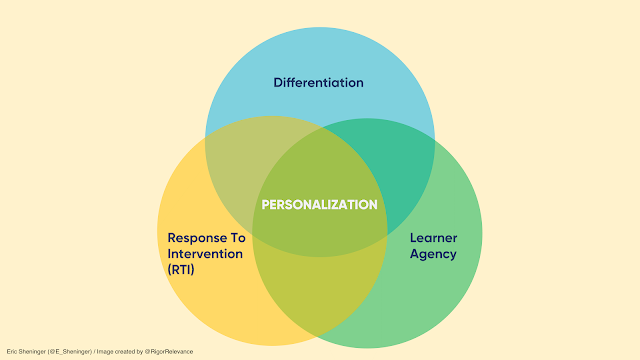
A Principal’s Reflections: Core Elements of Personalization
Quite a few ideas are appeared on negatively as they are affiliated with buzzwords, fads, or a absence of compound. You will not get significantly of an argument from me as to the validity of this perspective because it is accurate in a lot of circumstances. Educators want established strategies that can be applied quickly that will handle assorted learner demands although foremost to an improvement in outcomes. Personalization is far from a fad or buzzword as it represents an equitable tactic to mastering. I shared the adhering to definition in Disruptive Imagining in Our School rooms:
Personalization constitutes pedagogical approaches that be certain all learners get what they need to have when and wherever they need it to be successful.
Personalization represents a shift in emphasis from the “what” (information, curriculum, exams, applications, technologies) to the “who” to generate a more personalized finding out practical experience for all children. At the forefront is creating and sustaining a tradition that imparts goal, meaning, relevance, possession, and numerous paths that cater to all students’ strengths and weaknesses. Equipment this kind of as the Rigor Relevance Framework and technological innovation can definitely help, but what is far more critical is an emphasis on three core aspects. Though these are not new by any extend, it is worthwhile to see how they seamlessly connect to produce a individualized knowledge.
Learner agency
The underlying premise is to transfer learners from a state of engagement to empowerment so that they exert more possession more than their learning. To accomplish this aim, they need to be granted much more autonomy in the classroom and beyond. It is driven by high-agency methods these kinds of as voice, option, path, rate, and place. These help in producing essential competencies desired for results in a disruptive globe.
Differentiation
Although not a new concept by any means, the obstacle has often been with powerful and reliable implementation. The over-all premise is that instruction is tailor-made to superior meet up with students’ requires in the parts of information, course of action, and item. Whereas company focuses more on what the learner is executing, differentiation is normally pushed by the instructor. Ongoing evaluation is essential as this delivers the teacher with the important info to produce lessons and responsibilities that are much more customized. A very simple Google lookup will unveil all the several tactics and strategies that are offered to educators to make this a truth.
RTI
Response to Intervention (RTI) signifies a multi-tiered course of action to identify the actions and mastering demands of struggling students early on and then offer distinct assist in the variety of interventions. Factors incorporate:
- Tier 1 – Teacher supplies research-based mostly instruction to the whole class making use of intensive checks for knowledge as a signifies of formative evaluation. This data, and that gathered by means of regimen benchmarking, is used to establish what supports are desired in Tier 2. Habits screenings are carried out as very well.
- Tier 2 – Targeted supports working with the data gathered from the Tier 1 interventions are made use of to deliver tiny-group instruction that focuses on unique learning and behavioral needs.
- Tier 3 – At this level, the most at-danger college students are provided individualized support, normally in a just one-on-1 placing.
Details is a substantial element as it influences the varieties of supports used in each tier higher than. For certain techniques that can be utilised in each tier, click on Below.
Whilst electronic instruments, study on the brain, and an emphasis on higher-company approaches could possibly be new, personalization is not. Acquiring an knowledge of all the interconnected elements can help you and some others in building encounters that meet up with the numerous requires of college students although nurturing a constructive university tradition.

